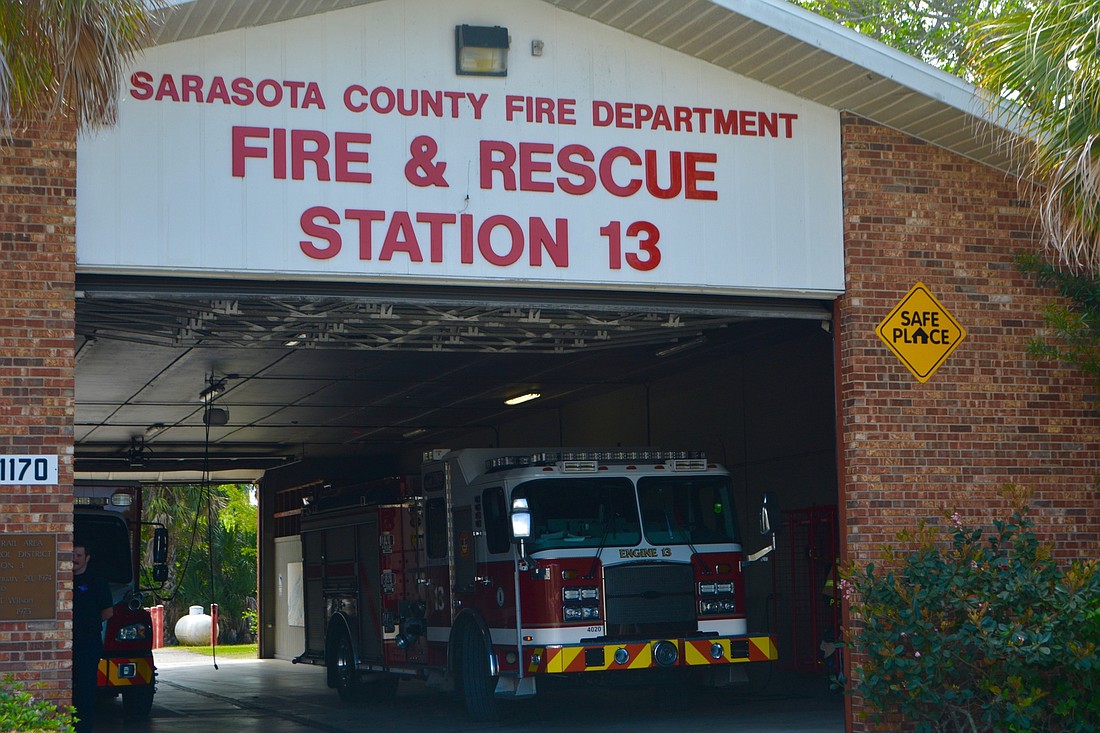- December 19, 2025
-
-
Loading

Loading

After several years of analyzing data, call volume and general countywide growth, the Sarasota County Fire Department has decided to overhaul fire stations on Apex Road, Bee Ridge Road and Siesta Key. The new stations are expected to better accommodate personnel in the event of hurricanes, evacuations and staff growth.
Sarasota County Fire Chief Michael Regnier first gained approval from the County Commission in 2014 to commence with the strategic station rebuilds. Safety and storm-readiness, he said, have been the driving forces.
Fire stations at Twin Lakes Park and University Park were constructed in 2016, costing a total of just more than $4 million for each
station. A year later in 2017, stations off Murdock Road and Tamiami Trail in Vamo were completed at a total of just more than $3 million each, featuring further upgrades from their original floorplans.
The fire stations on Apex, Bee Ridge and Siesta Key are next, though there is no firm timeline or budget. County Commissioners are scheduling reviews of each facility.
“We had implemented a plan to do different fire stations as we progress in Sarasota County. We’re also looking at rebuilding some of the stations that are already in the system,” Regnier said. “So, some of the stations that we have are older and they’re not storm-ready. They’re not ready to handle a hurricane, so these new fire stations that we’re building will be rated to hurricane standards.”
Additionally, Regnier says that many of the stations were built in the 1970s, back when there were few — if any— female firefighters. As such, the new stations will also feature better personal accommodations with greater capacities for privacy.
Siesta Key’s fire station, or Station 13, was built to accommodate two people back in 1973. Now, however, as many as four to six personnel may be working in the building at one time. The hope, should the numbers work out, is to add a second story.
“All of the living quarters will be upstairs, so it will be much larger,” Siesta Key Lt. Robert Raydman said. “I mean, we’ve been here a long time, and you kind of grow comfortable with your surroundings. But, at the end of the day, it’s going to be bigger and better and it’s going to be a little more comfortable.”
Similarly, the station on Bee Ridge Road was built in 1974. All metal with little wiggle room, the new station Regnier has in mind will be more moderately sized, but also feature increased storage as well as a rope course for training purposes.
“We’ve added more apparatus with the special operation unit, and we have a lot of new hazardous materials and technical rescue and things like that,” Lt. Paul Olsen said of the space. “But, at the new station, we’ll have actual structures and we’ll put it in garages and protect our equipment a little better.”
Finally, the station at Apex Road will see the greatest of structural changes as, up until now, it was considered a temporary station.
Located near Celery Fields, the personnel who work out of the station are housed by a large white tent and temporary building. But as call volume and residential neighborhoods increased, so, too, did the need for a more permanent structure.
“The firefighters are really excited to get a permanent fire station here in this location,” Regnier said. “They realize the need for the community ... Luckily, we were proactive and have a temporary facility here now. But we have outgrown that temporary facility and need to get to a permanent position here.”
Once approved, each station will take about a year to tear down and rebuild. Regnier is also coordinating with landowners in surrounding areas so that personnel will have a place to go while their station is under construction. Additionally, Regnier says the construction between the three will also be staggered to avoid simultaneous work.
“Over the years, we’ve done very well working to remodel stations for the ones that are already storm-ready and to bring others up to storm-readiness,” he said. “I think it’s really good for the community. And these are the community’s fire stations, so we’re proud of them and we hope the community is proud of them as well.”